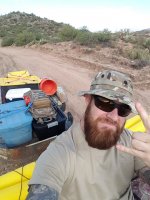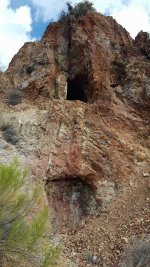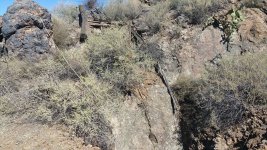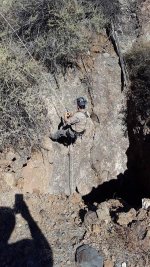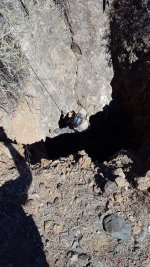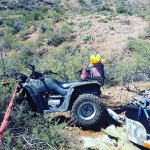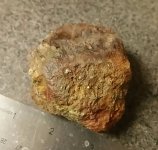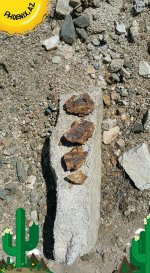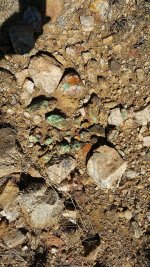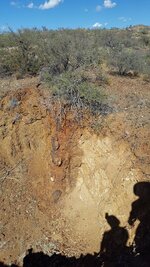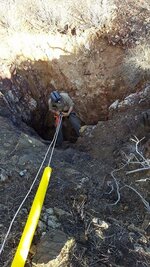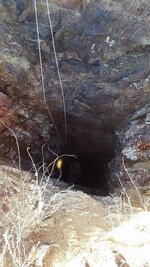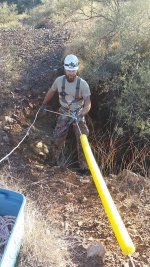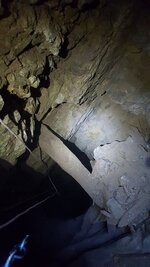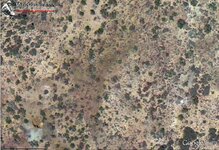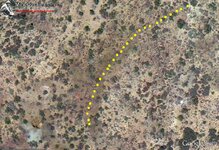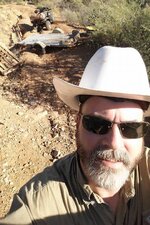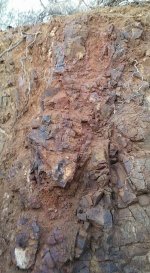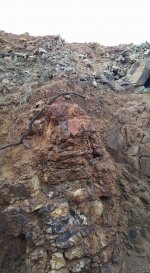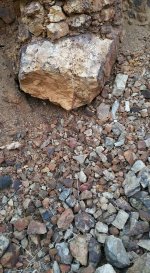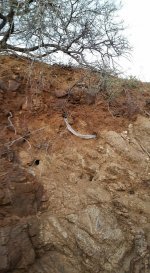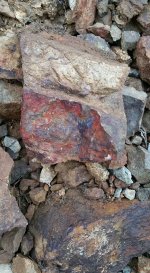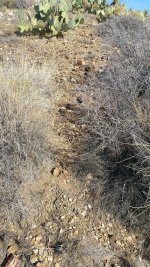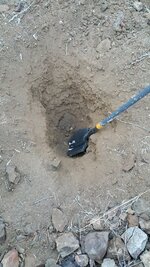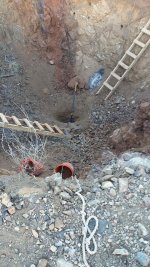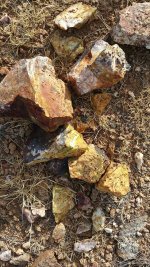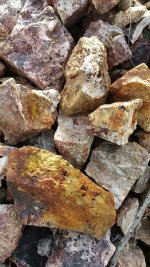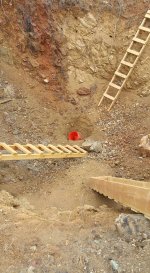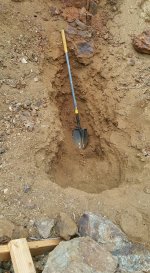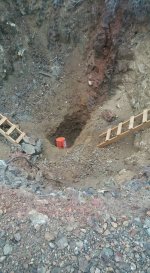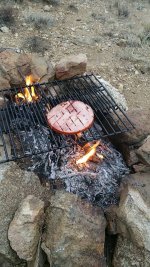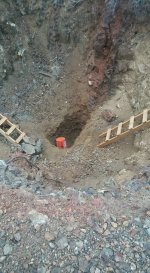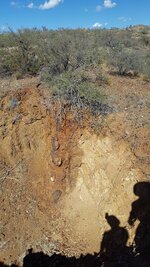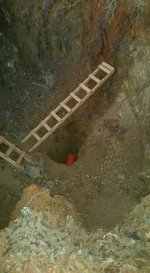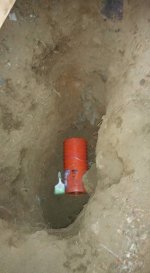SaltwaterServr
Sr. Member
Quick history. I started prospecting in April of 2015 after moving to Arizona for a new career. I've always loved geology and gold held a unique interest for me from the earliest age I can remember. My uncle lived out here and taught me a little bit about prospecting, but 99% of what I do is self-taught.
Anyway, I'm going to skip my first year and a half and fast forward to 9-27 of 2016...
----------------------------------------
I've been fighting this odd stomach bug all week. Started off on Tuesday with what I thought was food poisoning, but the dang thing keeps hanging around. Anyway, four trips to the commode Saturday morning put me behind a bit.
I went out and mapped the third level of the Dollar mine. It's somewhere around 185-190 feet give or take. The mineralization is pretty poor up there. It seems the vein falls apart but there is one oddball mineral pocket.
Oh, a few bats in there before I got up to the third level. Don't ask me how I figured it out, I just thought that noise would work.
I did find one small deposit of copper in between the main and second level near the face of the mine. It's about 3/32" thick, give or take and has some azurite there too. Meh.
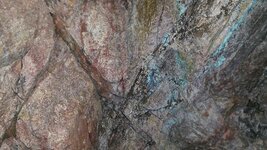
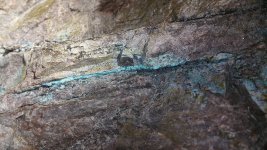
At this point I think the Dollar is pretty played out overall. We're going to test drill it to make sure and I'm going to get down into this winze.
Well, at some point Dan and I are going to start rapelling into and out of mine shafts, probably starting next weekend. I thought I would try it out solo in a 50' raise that has a few obstacles in it, just like the real deal. The raise is all within the first minute of this video.
What I did was get up to the third level above that platform and tie off my rope there. Then I went down and ascended using this technique:
It's really easy once you get the tether from the top ascender to the harness the right size. Ascending is easy. Controlled rappelling is easy.
You know what ain't easy? Changing the gear from ascending to rappelling while you're still on the rope. Did I get stuck? Yeah. For about 15 minutes trying to figure it out. Was I all the way up almost to the platform? Again, yeah. I dig manage to swing over to one side beam and hoist myself up and switch the gear.
Once I got home I figured out what I did wrong. When I took the Croll off, I should've made sure to leave a long lead on the hand ascender. then I could take up slack through the Stop and disconnect the Ascender. Silly mistake. Really, we'll have very limited reason to every switch from ascending to rappelling, it'll be the other way around. It's still a skill to have.
I did head over to the Rattler mine area and pick up two heaping buckets of death ore. It's the stuff that is full of arsenopyrite. It's sitting outside waiting to be processed in a few weeks.
I would post more but I got sidetracked by 3 articles on froth flotation. You'll see more of that and what it entails this winter as I get into more technical gold recovery.
Anyway, I'm going to skip my first year and a half and fast forward to 9-27 of 2016...
----------------------------------------
I've been fighting this odd stomach bug all week. Started off on Tuesday with what I thought was food poisoning, but the dang thing keeps hanging around. Anyway, four trips to the commode Saturday morning put me behind a bit.
I went out and mapped the third level of the Dollar mine. It's somewhere around 185-190 feet give or take. The mineralization is pretty poor up there. It seems the vein falls apart but there is one oddball mineral pocket.
Oh, a few bats in there before I got up to the third level. Don't ask me how I figured it out, I just thought that noise would work.
I did find one small deposit of copper in between the main and second level near the face of the mine. It's about 3/32" thick, give or take and has some azurite there too. Meh.


At this point I think the Dollar is pretty played out overall. We're going to test drill it to make sure and I'm going to get down into this winze.
Well, at some point Dan and I are going to start rapelling into and out of mine shafts, probably starting next weekend. I thought I would try it out solo in a 50' raise that has a few obstacles in it, just like the real deal. The raise is all within the first minute of this video.
What I did was get up to the third level above that platform and tie off my rope there. Then I went down and ascended using this technique:
It's really easy once you get the tether from the top ascender to the harness the right size. Ascending is easy. Controlled rappelling is easy.
You know what ain't easy? Changing the gear from ascending to rappelling while you're still on the rope. Did I get stuck? Yeah. For about 15 minutes trying to figure it out. Was I all the way up almost to the platform? Again, yeah. I dig manage to swing over to one side beam and hoist myself up and switch the gear.
Once I got home I figured out what I did wrong. When I took the Croll off, I should've made sure to leave a long lead on the hand ascender. then I could take up slack through the Stop and disconnect the Ascender. Silly mistake. Really, we'll have very limited reason to every switch from ascending to rappelling, it'll be the other way around. It's still a skill to have.
I did head over to the Rattler mine area and pick up two heaping buckets of death ore. It's the stuff that is full of arsenopyrite. It's sitting outside waiting to be processed in a few weeks.
I would post more but I got sidetracked by 3 articles on froth flotation. You'll see more of that and what it entails this winter as I get into more technical gold recovery.


